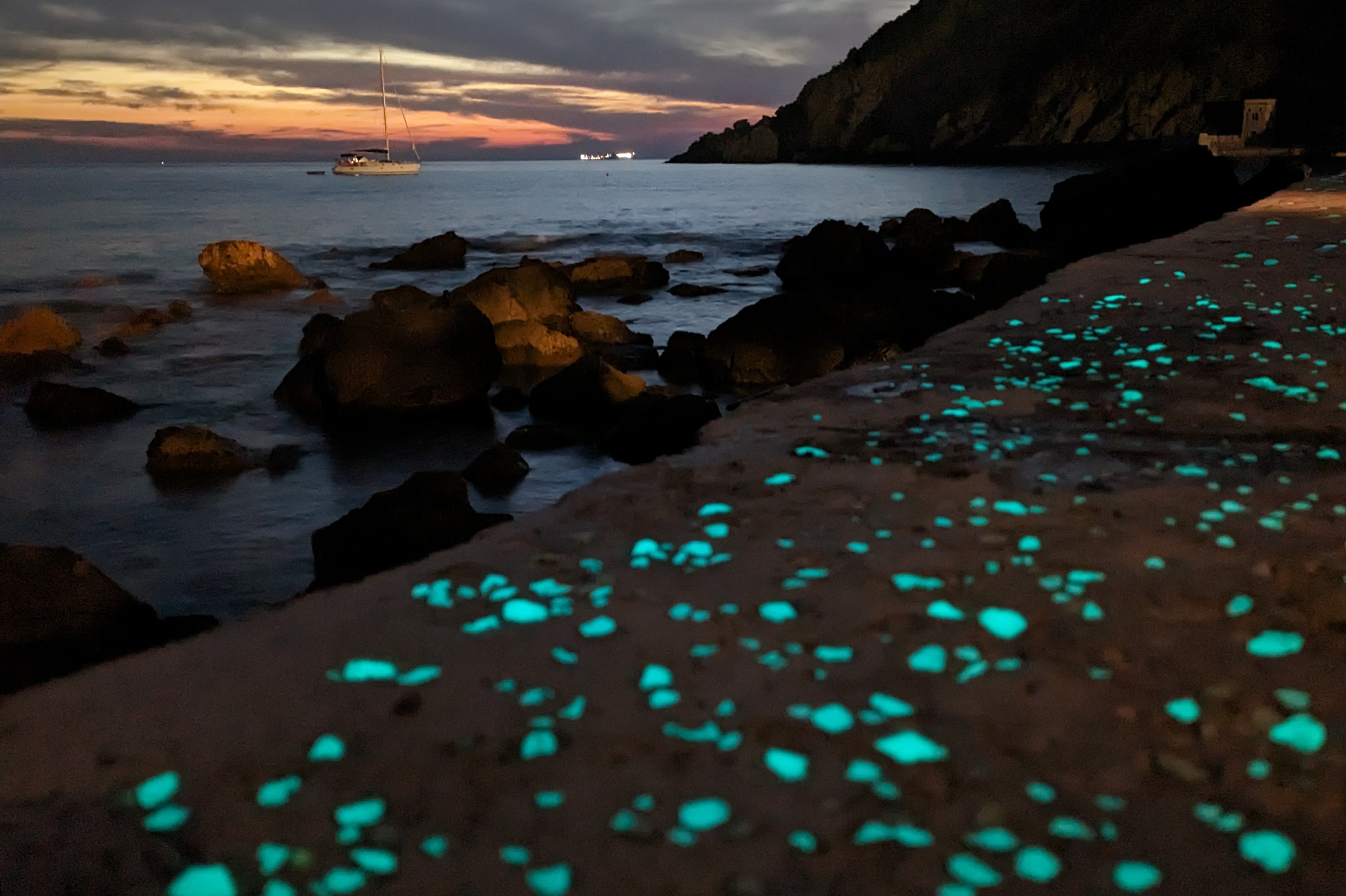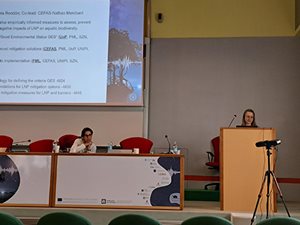Story
Improving understanding of light and noise pollution on aquatic environments
26 January 2024
PML is pleased to be participating in a new EU project, launched this week, to improve our comprehension of how biodiversity is being impacted by light and noise pollution in aquatic environments, such as rivers, lakes, coastal and offshore waters.

Mediterranean sunset with view on coastal artificial structures with decorative encrusted phosphorescent material at Quercianella, Italy. Photo credit: Elena Maggi.
Funded by the Horizon Europe programme, the project ‘Aquatic Pollution from Light and Anthropogenic Noise: Management of Impacts on Biodiversity (AquaPLAN)’ aims to quantify the combined impacts of Light and Noise Pollution (LNP) on aquatic biodiversity in European waters, and facilitate the implementation of strategies for managing these pollutants through novel interdisciplinary approaches.
Understanding of how LNP affects aquatic biodiversity has dramatically improved in recent decades. Evidence suggests that these effects are prevalent globally, in all types of aquatic ecosystems, from rivers and lakes to the seafloor. Despite growing knowledge and having access to a range of technologies, best practice methodologies and policy interventions, there are still many critical knowledge gaps that, if addressed, would allow better management and reduce LNP impacts.
Project coordinator, Prof. Elena Maggi from University of Pisa, said:
“Currently, existing regulations on the emission of Artificial Light At Night (ALAN) and anthropogenic noise are highly fragmented in inland, coastal and offshore waters. Moreover, we still need good datasets to understand how to monitor, protect and restore aquatic biodiversity effectively.”
 AquaPLAN will:
AquaPLAN will:- Review LNP impacts on aquatic biodiversity, assess local and regional regulator and decision-maker perceptions and their LNP management.
- Identify the mechanisms of LNP and quantify the combined impacts on biodiversity in aquatic habitats.
- Explore and facilitate new, interdisciplinary management solutions to prevent and mitigate the combined impacts of LNP on aquatic biodiversity.
Prof. Tim Smyth, AquaPLAN participant and Head of Science for Marine Biogeochemistry and Observations at PML, commented:
“PML will be providing key modelling and data synthesis of artificial light and in-water noise pollution to see where hotspots of both intersect with different marine habitats. Fieldwork will then determine the impact of these two stressors combined, in selected European marine and freshwater. PML will also be leading work on the current legislative framework governing both light and noise pollution, as well as pioneering work on the knowledge and perceptions around light and noise pollution, and evidencing values, trade-offs and barriers to mitigation measures”.
The research teams will engage with stakeholders throughout the project to tailor research outputs for applicability, efficiency and direct use. This will enable the delivery of practical tools allowing regulators, decision-making bodies and maritime industries to proactively manage aquatic environments and their biodiversity, both at European and international levels.
Prof. Maggi continued:
“By engaging with stakeholder experts in aquatic biodiversity, LNP and the maritime industry throughout the project, AquaPLAN will provide sound recommendations on efficient LNP mitigation options and how to face potential barriers to their applications”.
AquaPLAN launched on 1 January 2024 and will run for four years with funding of €2.6 million. It is coordinated by the University of Pisa and comprises a transdisciplinary team of 13 organisations from 9 countries.
The AquaPLAN project website (aquaplan-project.eu) is coming soon and in the meantime, can be followed on X @AquaPLAN_EU and LinkedIn @AquaPLAN-Project.